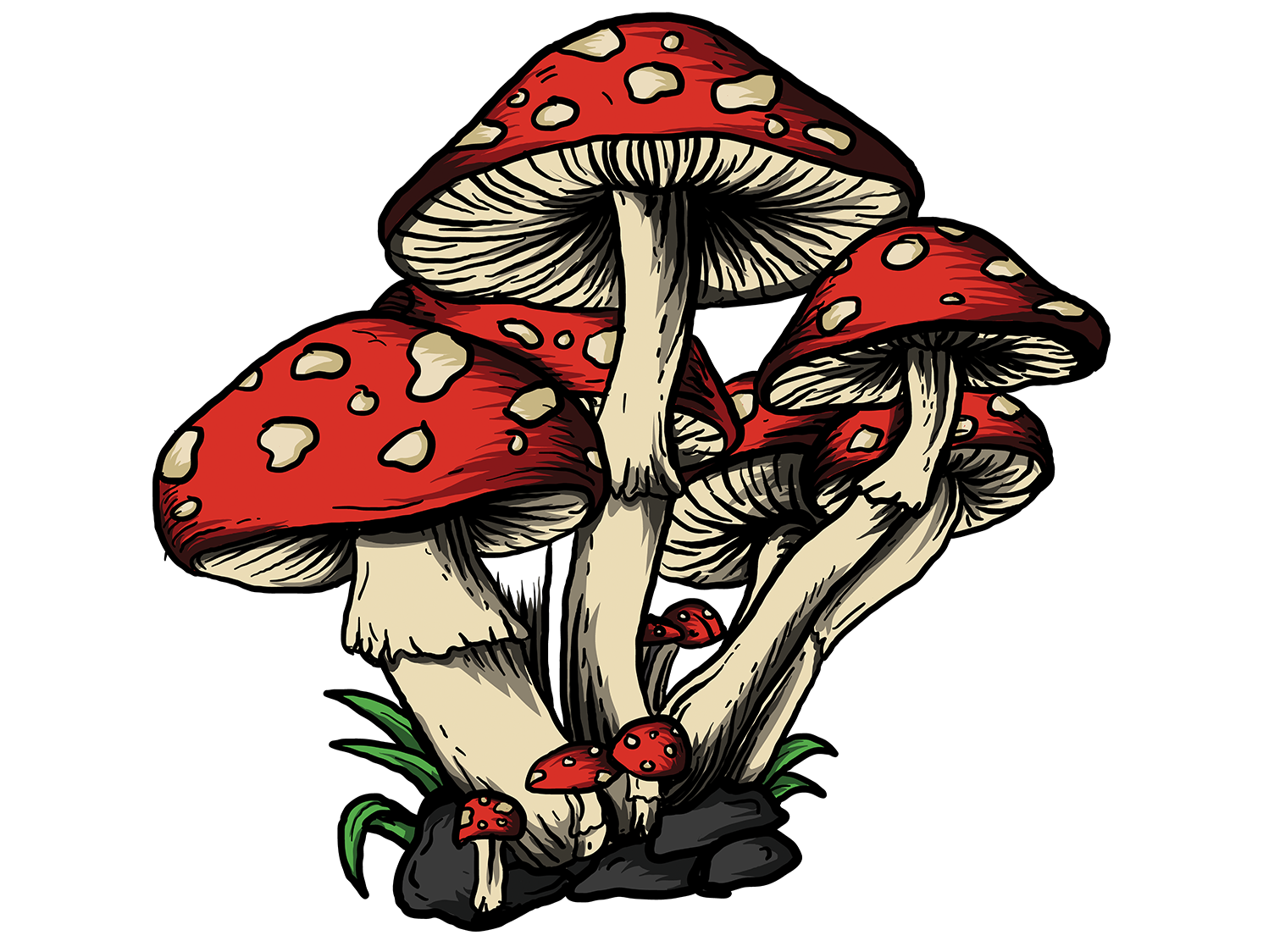Strolling through a forest in late summer or the beginning of fall in the northern hemisphere, you may catch a glimpse of the fairytale mushroom. With a bright red cap and white spots, the Amanita Muscaria is the quintessential "toadstool" beloved by fairies, elves, and other mystical creatures.
Otherwise known as the Fly Agaric, its outward appearance is just as distinct as its long (and largely contested) history. So, we're going to follow in this mushroom's footsteps and learn all about its rich medicinal lifetime.
It All Starts with Siberian Tribes and Russian People
Russians and Siberians have utilized Amanita Muscaria for hundreds of years. Ingesting it and applying it topically, they used it for its anti-inflammatory, analgesic, stimulant, and anxiolytic properties.
Perhaps one of the primary therapeutic uses was as a stimulant to help save off fatigue and increase stamina. That way, individuals could become more productive, effectively using the shroom as many westerners would drink coffee.
Some sources suggest that reindeer herders throughout the region used dried pieces of the mushroom for strength and energy too, allowing them to keep up with their herd.
But It Was a Religious Ceremonial Tool Too
People indigenous to the area gave this mushroom roots in pre-Christian religious traditions. But interestingly, everyday people in western Siberia weren't allowed to use it. Instead, Amanita Muscaria usage was only permitted to practicing shamans or shaman-esque entities.
As you may well imagine, they used the mushroom to achieve trance-like states that were otherwise only elicited through dance and drumming sequences.
Conversely, anybody in eastern Siberia was able to enjoy the recreational effects of Fly Agaric. But it was only the shaman himself that could eat it — everybody else drank the shaman's urine, as it still contained the psychoactive components of the mushroom.
It Appeared in Folklore Too
The Amanita Muscaria played a massive role in the Koryaks' folklore. This indigenous group was located in eastern Siberia and can still be found there today.
The tale considers the mushroom a sacred gift sent from Big Raven, the first shaman and the beginning of the human race.
As the story goes, Big Raven discovered the magic of the Fly Agaric when he caught a whale and wanted to return him to the ocean, but quickly realized he was too large and heavy to carry.
Thus, Big Raven asked Vahiyinin (otherwise known as Existence) for help.
And what did Vahiyinin do? You guessed it — Vahiyinin crafted the Amanita Muscaria, dubbing it "wapaq."
Big Raven consumed the mushroom, became incredibly strong, and was thus able to throw the whale back into the sea.
Amanita Muscaria Could Be Involved with Ancient Aryans of India
Soma, a drug used by the ancient Aryan people of India, could be the Amanita Muscaria. R. Gordon Wasson posited the idea that the drug might be the shroom in an essay he published on the matter.
Since the Aryans existed roughly 3,500 years ago, they left very few artifacts except over 1,000 hymns passed down throughout the generations through word of mouth.
But, as the western world got ahold of them, the hymns were written down. While the meanings of the words were very much obscure, Wasson picked them apart to come up with his almost unarguable theory that Soma was the aforementioned mushroom.
Berserkers Go Beserk for Fly Agaric
Some sources state that Viking warriors called berserkers would consume the mushroom before heading into battle, letting the shroom guide them toward a trance-esque fighting rage.
As the more astute among you would have already gathered, this "extra strength" plot aligns with the Koryak's Big Raven folktale.
Although, one paper suggests that henbane (i.e., a plant sometimes used in "magic brews" or as a medicine) could have actually been the pre-battle nibble of choice for these fighters. When we said the history was largely contested, we meant it!
The 1980s and 1990s Bring Medicinal Muscaria to Europe and Russia
In more recent history, Fly Agaric has been utilized for medicinal reasons in Russia and Europe. Prominently, it was seen topically applied as a tincture or homeopathic remedy.
In the 1980s, Russians continued to use home preparations of the mushroom to treat joint issues. In fact, it's still popular in the country and is in a wide range of ointments and creams that can be purchased for home use.
As the 1990s rolled around, Marja Härkönen found that the Karelian people in northwestern Russia still utilized Amanita Muscaria as a home remedy. They remove the cap's red skin, soak it in alcohol, and use it to treat bruises, other topical pains, or stomachaches and headaches.
And That Brings Us to Today's Amanita Muscaria Usage
Today's researchers and users have rediscovered what these ancient tribes and indigenous people already knew — this mushroom is more than just a fairytale emblem; it has deep medicinal benefits.
People utilize properly strained and tested Fly Agaric for its intoxicating and pain-relieving effects. So much so that it's dubbed an alternative to Psilocybe Cubensis and other mushrooms containing psilocybin!
As you now know, Amanita Muscaria has a far-reaching, rich history with roots in many cultures, recreations, and ceremonial settings — and it's still utilized today in many corners of the world.
If you're looking to experiment with the iconic red-capped mushroom, always purchase from reliable sources to ensure proper potency and safety.
References
https://psyched-wellness.com/the-spotty-history-of-amanita-muscaria
https://psychedelicspotlight.com/a-cultural-history-of-the-amanita-muscaria-mushroom/
https://chacruna.net/fly-agaric-amanita-muscaria-traditional-modern-therapeutic-uses/

